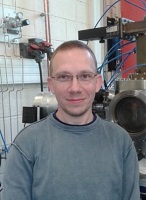Dr Alexandre Tallaire, chargé de recherche CNRS
LSPM-CNRS (Villetaneuse) and IRCP, Chimie ParisTech (Paris)
Abstract
Quantum technologies (QT) represent one of the most important challenges for the future, holding the promise of sensors and devices having a far superior performance to standard classical systems. Possible applications are foreseen in a wide range of fields including health, communications, security and environment with first prototypes already commercially available. One of the inherent drawbacks of the extreme sensitivity of quantum devices is the control of the materials used, their properties and close environment that require specially designed synthesis processes to achieve the best performance.
In this talk I will address the issue of synthesizing tailored materials for practical quantum devices, focusing essentially on the efforts related to diamond thin films. In fact the negatively charged nitrogen-vacancy (NV) center in diamond, has been the subject of an increasing attention due to its particular physical properties. The electronic spin state of this defect can be optically read-out and manipulated leading to exceptionally long coherence times even at room temperature, opening the path to quantum cryptography, magnetic sensors or single photon emitters. I will detail how the CVD growth process can be exploited to create those defects when controlling the isotopic purity of the matrix, the orientation and localization of the defects in the crystal. Eventually the use of other materials will be discussed as well.
Laboratoire LMGP
3 parvis Louis Néel - 38000 Grenoble
Accès : TRAM B arrêt Cité internationale



